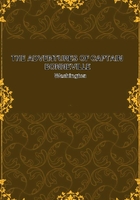
第97章 Irving’s Bonneville - Chapter 34(1)
Fort Wallah-Wallah--Its commander--Indians in its neighborhood--Exertions of Mr.
Pambrune for their improvement--Religion--Code of laws--Range of the Lower Nez Perces--Camash, andother roots-- Nez Perce horses--Preparations for departure-- Refusal of supplies--Departure--Alaggard and glutton FORT WALLAH - WALLAH is a trading post of the Hudson's Bay Company, situated justabove the mouth of the river by the same name, and on the left bank of the Columbia. It is builtof drift-wood, and calculated merely for defence against any attack of the natives. At the time ofCaptain Bonneville's arrival, the whole garrison mustered but six or eight men; and the post wasunder the superintendence of Mr. Pambrune, an agent of the Hudson's Bay Company.
The great post and fort of the company, forming the emporium of its trade on the Pacific, isFort
Vancouver; situated on the right bank of the Columbia, about sixty miles from the sea, and justabove the mouth of the Wallamut. To this point, the company removed its establishment fromAstoria, in 1821, after its coalition with the Northwest Company.
Captain Bonneville and his comrades experienced a polite reception from Mr. Pambrune, thesuperintendent: for, however hostile the members of the British Company may be to theenterprises of American traders, they have always manifested great courtesy and hospitality tothe traders themselves.
Fort Wallah-Wallah is surrounded by the tribe of the same name, as well as by the Skynsesand
the Nez Perces; who bring to it the furs and peltries collected in their hunting expeditions. TheWallah-Wallahs are a degenerate, worn-out tribe. The Nez Perces are the most numerous andtractable of the three tribes just mentioned. Mr. Pambrune informed Captain Bonneville that hehad been at some pains to introduce the Christian religion, in the Roman Catholic form, amongthem, where it had evidently taken root; but had become altered and modified, to suit theirpeculiar habits of thought, and motives of action; retaining, however, the principal points offaith, and its entire precepts of morality. The same gentleman had given them a code of laws, towhich they conformed with scrupulous fidelity. Polygamy, which once prevailed among them toa great extent, was now rarely indulged. All the crimes denounced by the Christian faith met withsevere punishment among them. Even theft, so venial a crime among the Indians, had recentlybeen punished with hanging, by sentence of a chief.
There certainly appears to be a peculiar susceptibility of moral and religious improvementamong
this tribe, and they would seem to be one of the very, very few that have benefited in morals andmanners by an intercourse with white men. The parties which visited them about twenty yearspreviously, in the expedition fitted out by Mr. Astor, complained of their selfishness, theirextortion, and their thievish propensities. The very reverse of those qualities prevailed amongthem during the prolonged sojourns of Captain Bonneville.
The Lower Nez Perces range upon the Way-lee-way, Immahah, Yenghies, and other of thestreams west of the mountains. They hunt the beaver, elk, deer, white bear, and mountain sheep.
Besides the flesh of these animals, they use a number of roots for food; some of which would bewell worth transplanting and cultivating in the Atlantic States. Among these is the camash, asweet root, about the form and size of an onion, and said to be really delicious. The cowish, also,or biscuit root, about the size of a walnut, which they reduce to a very palatable flour; togetherwith the jackap, aisish, quako, and others; which they cook by steaming them in the ground.
In August and September, these Indians keep along the rivers, where they catch and drygreat
quantities of salmon; which, while they last, are their principal food. In the winter, theycongregate in villages formed of comfortable huts, or lodges, covered with mats. They aregenerally clad in deer skins, or woollens, and extremely well armed. Above all, they arecelebrated for owning great numbers of horses; which they mark, and then suffer to range indroves in their most fertile plains. These horses are principally of the pony breed; but remarkablystout and long-winded. They are brought in great numbers to the establishments of the Hudson'sBay Company, and sold for a mere trifle.
Such is the account given by Captain Bonneville of the Nez Perces; who, if not viewed byhim